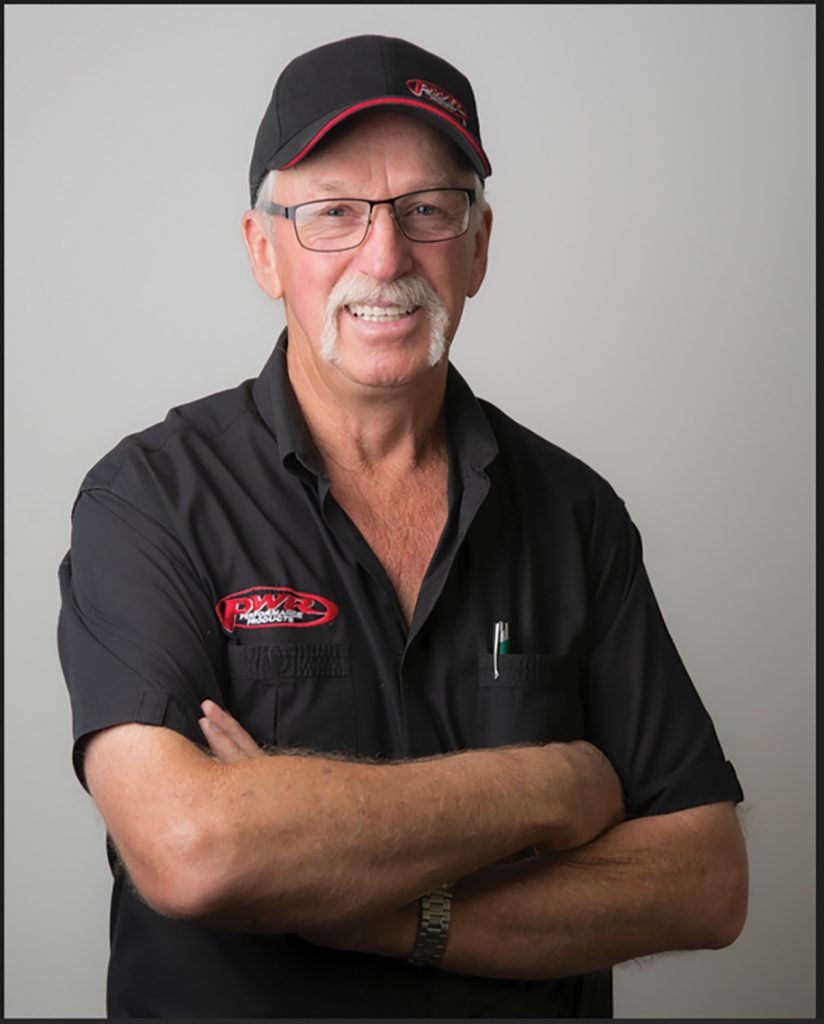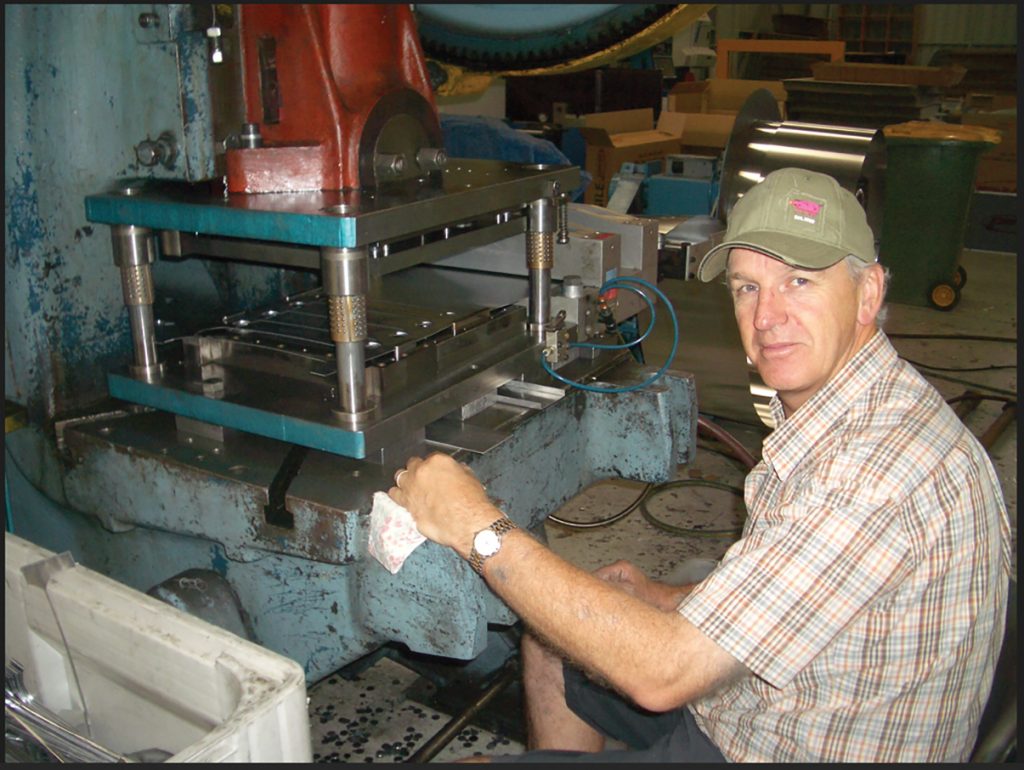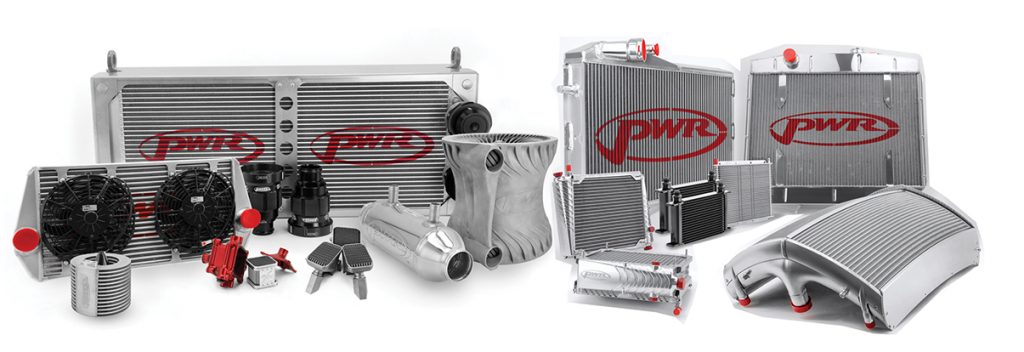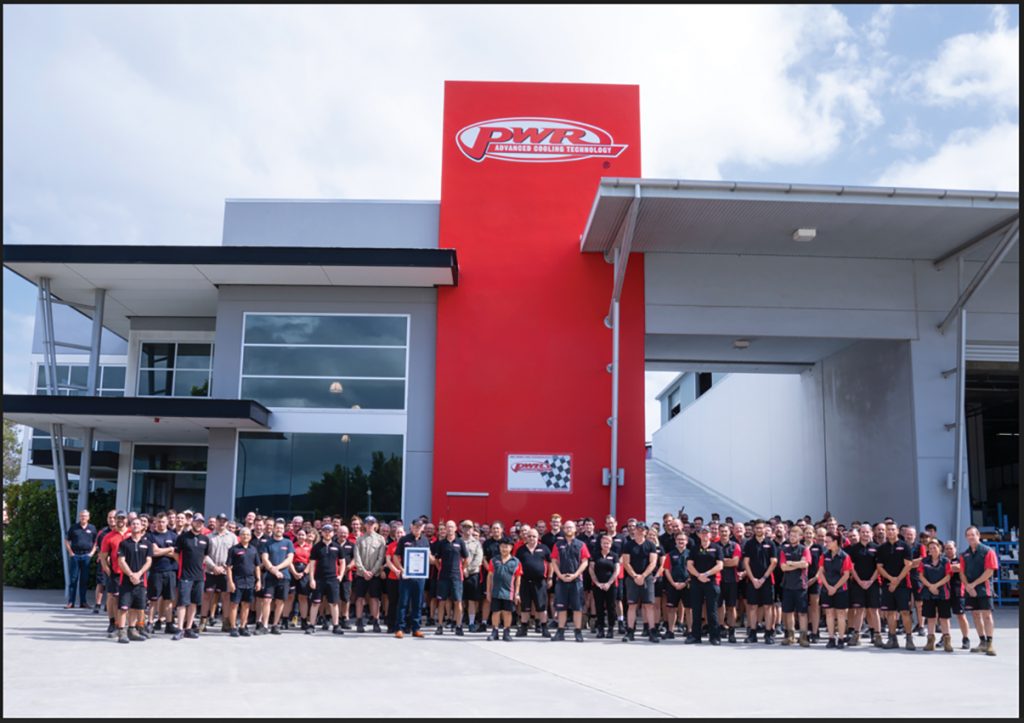FROM WARRNAMBOOL TO THE WORLD
Kees Weel saw an opportunity to supply radiators to a market in need, and it would take him all the way to Formula One

PWR’s Kees Weel was born in the Netherlands but came to Australia at a young age. His parents settled in the small dairy town of Timboon in country Victoria where Kees went to school.
“I was basically not a very good school person,” Kees says.
“I think the polite way of saying it was that I was asked not to come back.”
Coming from a family of 11 children, Kees knew he couldn’t rely on the bank of Mum and Dad, and he had to learn to stand on his own two feet.
He soon landed a job at Henderson Motors in the nearby town of Colac, where he completed his apprenticeship.
“It was great, because back then they did everything. You would be pulling automatic transmissions apart; you would be reconditioning the engines, and everything was done inside those walls,” Kees says.
“My first job, every day, was to sweep the floor and I am proud to say that in that period of time I wore out two brooms.”
Recalling that his paycheck as a first-year apprentice was $17.25, of which he spent $10 on board, Kees’ plan was to take on the world when he eventually completed his apprenticeship.
“I actually thought I knew everything. I was the biggest smart-arse there was. But I was starting to notice that you start learning after you finish your apprenticeship,” he reflects.
After a short stint at Kraft Foods in Simpson working as their maintenance mechanic looking after milk tankers, Kees applied for a job on Bougainville Island, just near Papua New Guinea in a copper mine, at a town called Panguna. And he was lucky enough to get it.
“I didn’t know a lot, as a country boy back in the ‘70s. You think, ‘Holy hell, what’s out there, what’s not?’ Not like the social media you have today,” Kees said.
“You can Google anything, and get a pretty good answer, a pretty good idea of what’s where, but there was none of that information back then, and I had no real idea of where I was going.
“I went over there as a diesel mechanic. I had never worked on a diesel before, and I thought I was so smart that I could bullsh*t my way through. And I did to some degree, but I learned very quickly.”
Kees spent two years on Bougainville Island before Papua New Guinea declared its independence.
On his return he purchased his first business, a service station in Camperdown, and after a few years he bought a wreckers in Warrnambool, called McLean’s Auto Wreckers.

Kees was one of the first wreckers to open on Sundays, and one thing he soon noticed was that there was a huge demand for radiators following weekend crashes.
The business was doing extremely well fitting reconditioned radiators, but radiators were becoming harder to source.
“I had a bit of a disagreement with a radiator supplier and I picked the radiator up and thought, ‘this cannot be that hard to make.’ So off I went and learned how to make radiator cores,” Kees explains.
Kees knew Max Dumesny, who would become a legend of the local Warrnambool Speedway, and he also knew that Max’s father-in-law, Sid Moore, owned a small radiator factory in Sydney.
“Sid supplied me some fin and some tube and some machines so I could make my own radiator core. So that’s how that started. And then I ventured further and went to America and bought more equipment, and later I was buying tube from America,” Kees says.
He was soon selling radiators to customers in Melbourne and Sydney and Kees decided it was time to move on from the wreckers and set up shop making radiators full time.
After some research uncovered that the place where the most radiators in Australia were sold was between Coffs Harbour in New South Wales and the Sunshine Coast in Queensland, Kees discovered 10 radiator shops between Southport and Tweed Heads.
“I thought, ‘you know what, I could move here and I could have my own little show. Employ a couple of people and supply these 10 shops and have a pretty comfortable life.’ And so I moved up here in 1987, and it just went nuts.
“People in Melbourne and people in Sydney were just all over me, wanting product. So we built a fairly substantial business here in the Gold Coast. We started off with one person. I employed a guy, just a kid, to help me in ‘87, and that guy – Tony Chowan – still works for me today on the factory floor.
“I think we have that longevity of looking after people. We have a lot of people here now. We have nearly 400 people of staff here today in Australia and 150 overseas.”

While the business in Australia was going well, it was when Kees started visiting the US that things really took off.
“We were getting a lot of raw material from America and I enjoyed going over there and meeting a lot of people in the radiator industry, globally and learning. And people would just tell me, ‘Oh, you’ve got to get to the aluminium.’ So I thought about it and there were hardly any aluminium radiators in Australia,” Kees says.
In 1996 Kees installed an aluminium furnace, which turned out to be a very good business decision.
Kees’ only son, Paul, was an apprentice machinist at the time, and his only real interest was racing motorbikes and cars. At 16 he had a big motorbike accident and broke both wrists, so Kees, trying to give him a future in business, suggested they should set up a company together to start selling aluminium radiators to the V8 Supercars category and local people in Australia – and so, Paul Weel Radiators (PWR) was born.
They soon approached racing legend and team owner Larry Perkins and produced an aluminium radiator for him, which Larry declared as “rubbish.” But then in 1997, Paul competed at his first Bathurst 1000 in a Ford Falcon with a PWR aluminium radiator fitted. Network Ten commentator Leigh Diffey compiled a two-minute story on the team and its own radiators before the start of that race.
“After that it was nuts; it was just going through the roof. The following year we supplied HRT (the Holden Racing Team) and Stone Brothers with product for Bathurst, and HRT won the race and then that was it,” Kees says.
Again, with the help of Leigh Diffey, Kees and Paul made contact with famous NASCAR team owner, Jack Roush, in the US and started supplying radiators.
PWR was soon supplying most of the NASCAR and IndyCar fields and eventually would go on to make aluminium radiators for Formula One, initially for Renault and eventually for Red Bull Racing.
PWR went on to float on the Australian Stock Exchange in 2015 with the initial share price $1.50 – today it is a little over $10.

PWR has recently set up a manufacturing factory in the town of Rugby in England to accompany its local facilities in Queensland and its Indianapolis factory in the States.
Today at the age of 70 Kees continues to run PWR as Paul has stepped away to focus on his growing commercial real estate business. And he is still an advocate of employing the best people.
“We have got (renowned Supercars team owner) Roland Dane now, as our chairman of our board, he is very motorsport orientated and has great industry knowledge, particularly in Europe – which is important as we now export over 90 percent of our product from here, and Europe’s a big taker of that,” Kees says.
Away from the business, Kees’ biggest hobby is attending to his rather large car collection.
“I have got an array of cars that I’ve collected. Mainly muscle cars in the ‘70s, as in XY GT Falcons and Monaros, and Bathurst Monaros, and XU1s and things like that,” Kees says.
He also has other business interests outside of PWR.
“We run a couple of regional large cattle properties and I’ve got a fairly large orange farm down at Mildura where we have 260,000 orange trees that certainly keep me busy,” he explains.
It is Kees’ down to earth attitude that has always served him well, and continues to do so today.
“I still enjoy the challenge; I love the challenge. As someone once told me, ‘You like getting sht done.’ And that’s what we do. We don’t stand back and think it is going to happen by itself. We do sht!”
To learn more about PWR, visit www.pwr.com.au





